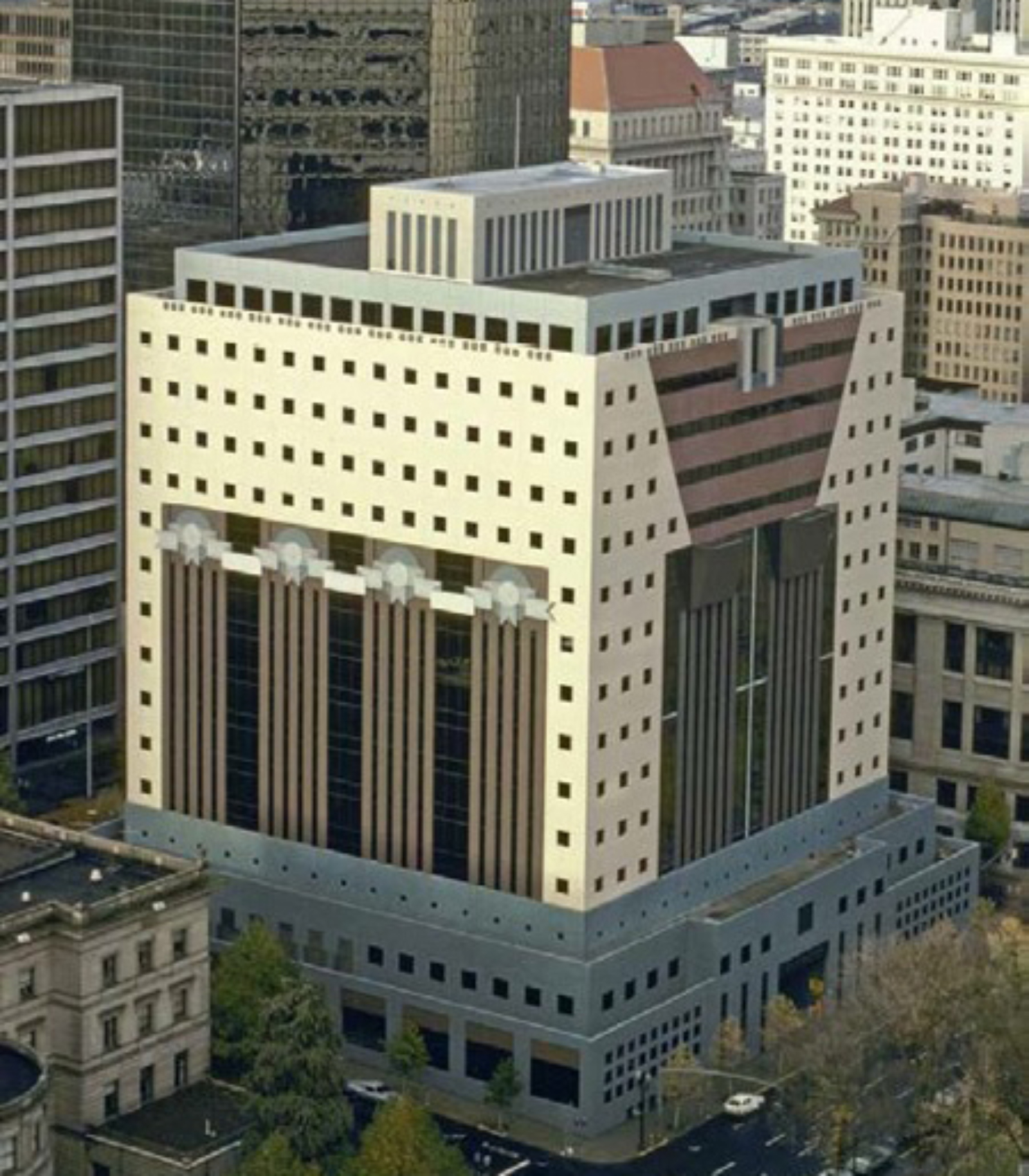 By Peter Meijer & Patience Stuart
By Peter Meijer & Patience Stuart
Oregon’s Modern Movement legacy spans the spectrum from the exquisite Memorial Coliseum, to the benign Drive-in Restaurants, and world renowned structures such as the Michael Graves Portland Building that push the edges of its modern architecture inventory. As we welcome our fourteenth chapter, Docomomo US/Oregon, chapter President Peter Meijer discusses the state's modern resources and its unique interpretation of modernism defined as the Northwest Regional Style.

Oregon, and the northwest, have their own unique interpretation of modernism defined as the Northwest Regional Style. It is characterized by a carefully considered relationship with the natural landscape, use of local materials (often untreated wood and brick), asymmetrical facades, and an emphasis on windows and open floor plans. Each year, the works of prominent local architects who designed many of these buildings, are highlighted by the “Street of Eames” tour.
Image (right): Drive-in Restaurant. Credit: Peter Meijer
 Many of Oregon’s largest public structures have International Style characteristics that are common to high rise buildings, including a concrete tower or curtain wall construction, gridded windows, and cubic massing. Pietro Belluschi, an internationally recognized architect and leader of the International style design, spent much of his career working in Portland. He, along with several other local architects designed many of the larger International style buildings that contribute to the Portland cityscape.
Many of Oregon’s largest public structures have International Style characteristics that are common to high rise buildings, including a concrete tower or curtain wall construction, gridded windows, and cubic massing. Pietro Belluschi, an internationally recognized architect and leader of the International style design, spent much of his career working in Portland. He, along with several other local architects designed many of the larger International style buildings that contribute to the Portland cityscape.
Image (left): Marquam Building. Credit: Peter Meijer
Unexpected, and undocumented, gems of the Modern Movement appear throughout the state. Docomomo US/Oregon has initiated a survey process to gather and document the resources. Naturally, the largest concentrations are in the Willamette Valley corresponding with the communities of Portland, Salem, and Eugene. Oregon has few Brutalist Style buildings scattered in communities as parking garages with a concentration of structures in Eugene, Oregon.
 The City of Portland is a leading proponent of documenting its modern resources. It recently completed a survey of its modern architecture in the Central City. Portland defined a period of interest that ranged from post-World War II development, in 1945 to1985. This included all modern era properties that will be at least fifty-years old when Portland’s Central City Plan is fully realized in 2035. In addition, the City of Portland commissioned the Modern Historic Resources of East Portland Reconnaissance Survey which is focused on Post-WWII residential resources and neighborhood development patterns. Both of these documents set a positive tone for incorporating modern resources in future city planning. Similar Post-WWII surveys have recently occurred throughout the state in Albany, Monmouth, Oregon City, McMinnville and other communities.
The City of Portland is a leading proponent of documenting its modern resources. It recently completed a survey of its modern architecture in the Central City. Portland defined a period of interest that ranged from post-World War II development, in 1945 to1985. This included all modern era properties that will be at least fifty-years old when Portland’s Central City Plan is fully realized in 2035. In addition, the City of Portland commissioned the Modern Historic Resources of East Portland Reconnaissance Survey which is focused on Post-WWII residential resources and neighborhood development patterns. Both of these documents set a positive tone for incorporating modern resources in future city planning. Similar Post-WWII surveys have recently occurred throughout the state in Albany, Monmouth, Oregon City, McMinnville and other communities.
Image (right): Red Lion Hotel. Credit: Peter Meijer
The Oak Hills Historic District in Beaverton, is Oregon’s first National Register-designated, modern era Planned Urban Development. The district includes a collection of “Rummer houses.” These are residences built by local homebuilder Robert Rummer between 1959 and 1975. The houses are distinctively modern with their spare lines, exposed beams, vaulted ceilings, and abundant glass windows.
Oregon’s distinctive modern gems have led to various advocacy efforts promoting their preservation. In 2010, the citizens of Portland embraced advocacy of a modern masterpiece. There was a collective outcry over Mayor Sam Adams’ proposal to demolish the city owned Memorial Coliseum designed in 1960 by Skidmore Owing and Merrill. So great was the citizen support, that Mayor Adams changed his political position, from demolition to a commitment towards encouraging investment in the structure. This served as a key strategy for the redevelopment of the Rose Quarter.
Oregon's modern resources are an asset to the state, Docomomo US/Oregon looks forward to our growing participation in the documentation, conservation, and advocacy of these important resources.
Peter Meijer, Principal at Peter Meijer Architect, PC is the President of Docomomo US/Oregon
Patience Stuart, Preservation Specialist at PMA, is the Treasurer of Docomomo US/Oregon.
